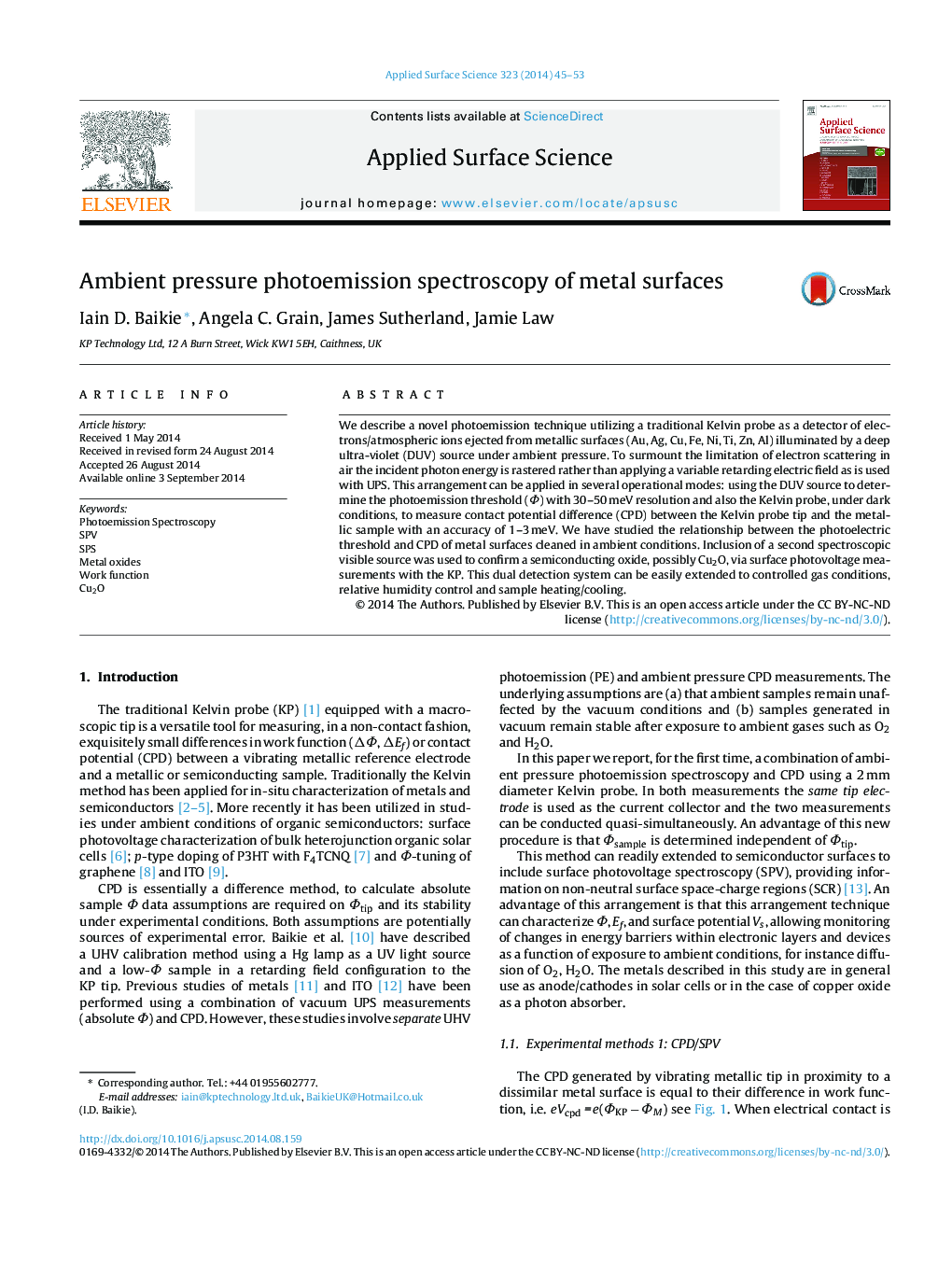| Article ID | Journal | Published Year | Pages | File Type |
|---|---|---|---|---|
| 5349144 | Applied Surface Science | 2014 | 9 Pages |
Abstract
We describe a novel photoemission technique utilizing a traditional Kelvin probe as a detector of electrons/atmospheric ions ejected from metallic surfaces (Au, Ag, Cu, Fe, Ni, Ti, Zn, Al) illuminated by a deep ultra-violet (DUV) source under ambient pressure. To surmount the limitation of electron scattering in air the incident photon energy is rastered rather than applying a variable retarding electric field as is used with UPS. This arrangement can be applied in several operational modes: using the DUV source to determine the photoemission threshold (Φ) with 30-50 meV resolution and also the Kelvin probe, under dark conditions, to measure contact potential difference (CPD) between the Kelvin probe tip and the metallic sample with an accuracy of 1-3 meV. We have studied the relationship between the photoelectric threshold and CPD of metal surfaces cleaned in ambient conditions. Inclusion of a second spectroscopic visible source was used to confirm a semiconducting oxide, possibly Cu2O, via surface photovoltage measurements with the KP. This dual detection system can be easily extended to controlled gas conditions, relative humidity control and sample heating/cooling.
Related Topics
Physical Sciences and Engineering
Chemistry
Physical and Theoretical Chemistry
Authors
Iain D. Baikie, Angela C. Grain, James Sutherland, Jamie Law,
